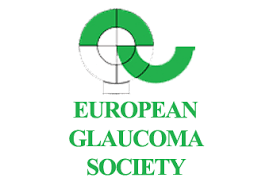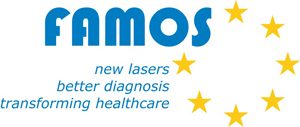Related organisations
 Association for Research in Vision and Ophthalmology (ARVO)
Association for Research in Vision and Ophthalmology (ARVO)
Founded in 1928, ARVO is now the largest eye and vision research organisation in the world. Its members include nearly 12,000 researchers from over 75 countries. Its mission is to advance research worldwide into understanding the visual system and preventing, treating and curing its disorders.
European Alliance for Vision Research and Ophthalmology (EU-EYE)
EU-EYE is a non-profit-making pan-European advocacy group. Its main goal is to raise political and societal awareness for the increasing need for vision research and ophthalmology at a European level. It has three main themes: 1) increasing and sustaining political awareness; 2) raising the profile within EU research funding and; 3) to gather and disseminate information among stakeholders in the field and at political level.
 European Glaucoma Society (EGS)
European Glaucoma Society (EGS)
Founded in 1978, the vision of the EGS is that, “Individuals with glaucoma have the best possible well-being and minimal glaucoma-induced visual disability within an affordable healthcare system.” EGS has four themes (Education, Implementation, Innovation and Communication), eleven committees and nine Special Interest Groups (SIGs) in order to, “Pave the way to better glaucoma care in Europe.”

European Vision Institute Clinical Research Network (EVCIR)
EVCIR is a network of European ophthalmological clinical research sites dedicated to perform clinical research in ophthalmology in order to strengthen the capacity of the European Union to study the determinants of ophthalmic diseases and to develop and optimise the use of diagnostic, prevention and treatment strategies in ophthalmology. It is a platform for clinical trial research in ophthalmology in Europe and a useful industry resource in order to promote the development of new drugs and medical devices.
Related projects
ACRIMA (2014-2016)
Fundus image processing for automatic screening of ophthalmological diseases
The objective of this Spanish national project led by UPV (GALAHAD partner) is the development of an automatic screening system for the three most significant diseases related to visual impairment: glaucoma, diabetic retinopathy and age-related macular degeneration.
BE-OPTICAL (2015-2019)
Advanced BiomEdical OPTICAL Imaging and Data Analysis
H2020 Innovative Training Network (ITN)
BE-OPTICAL will provide a unique and structured training programme to fourteen Early Stage Researchers (ESRs) in a wide range of optical imaging technologies and signal processing tools, including fluorescence spectroscopy and microscopy, optical coherence tomography, optogenetics, engineered nanomaterials and signal processing tools.
 FAMOS (2012-2016)
FAMOS (2012-2016)
Functional Anatomical Molecular Optical Screening
FP7 Integrated Project
FAMOS was a major FP7 project which included DTU and NKT (GALAHAD partners). It developed a new generation of light sources with step-changes in performance beyond the state-of-the-art to radically transform biophotonic technologies for point-of-care diagnosis and functional imaging. This enabled, “optical diagnostics with superior sensitivity, specificity, reliability and clinical utility at reduced cost, heralding an imaging renaissance in Europe.”
 PICCOLO (2017-2019)
PICCOLO (2017-2019)
Multimodal highly-sensitive PhotonICs endoscope for improved in-vivo COLOn Cancer diagnosis and clinical decision support
Early and accurate diagnosis and precise intervention can increase cure rate up to 90%. Improved diagnostic techniques with enough sensitivity and specificity are required to allow image-guided optical biopsy for in situ diagnosis, safe characterisation and resection of lesions during clinical practice interventions.
ShapeOCT (2015-2019)
Spectrally shaped supercontinuum sources for high-resolution Optical Coherence Tomography
This Danish national project includes some topics related to GALAHAD and has several common partners (NKT, DTU) or end users (Optos, Rigshospitalet). ShapeOCT will use Danish strongholds in supercontinuum (SC) light source and photonic crystal fiber (PCF) technology to develop a new generation of SC light sources with shaped noise and power spectra that are optimal for use in a new generation of ultra-high resolution Optical Coherence Tomography (UHR OCT) systems.

